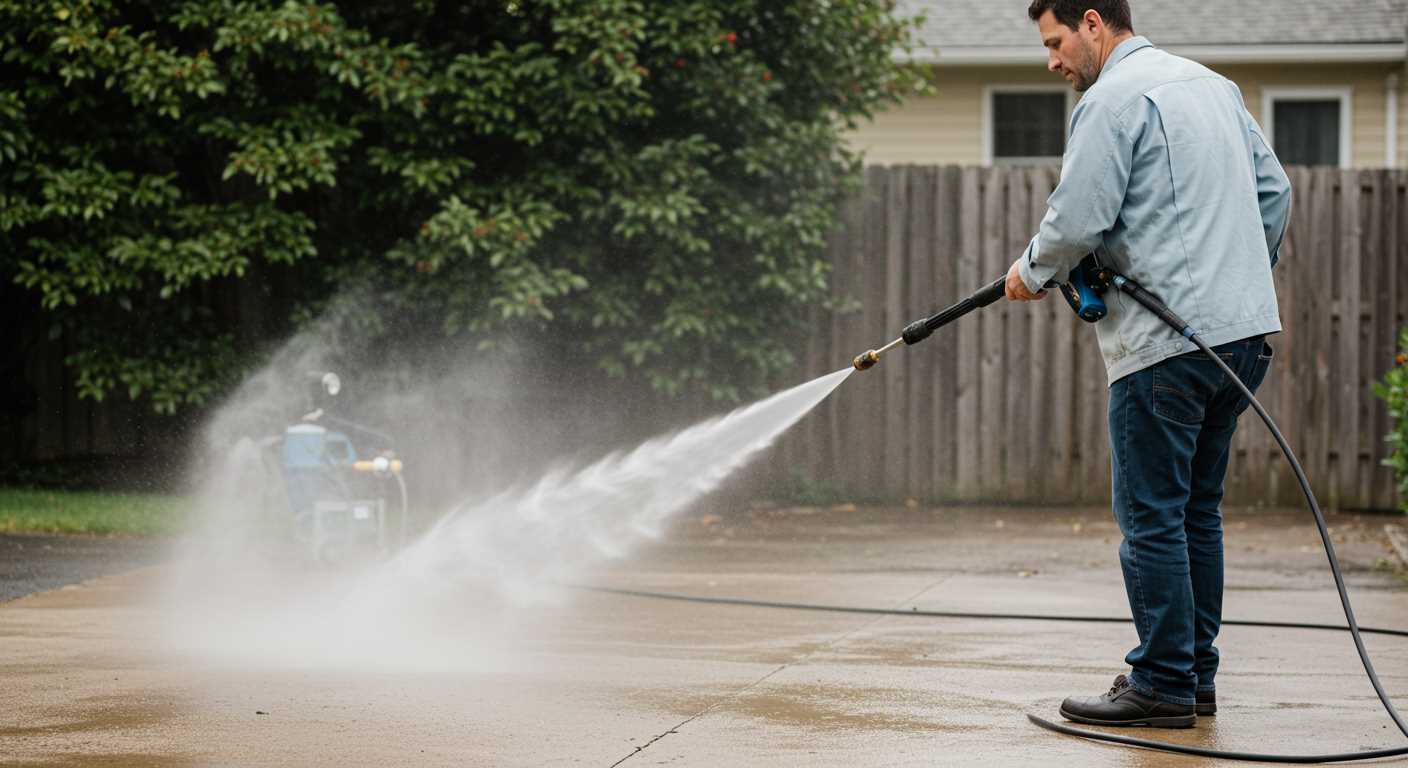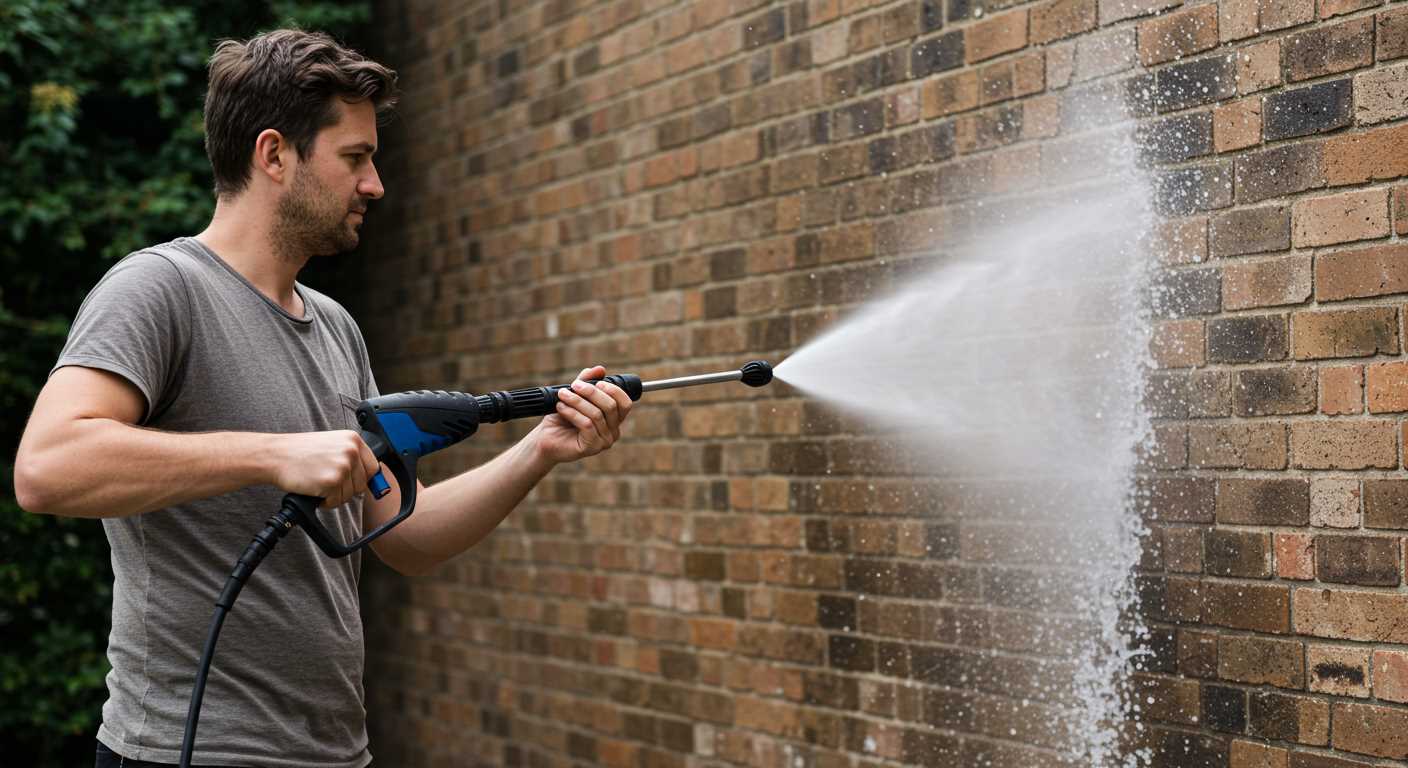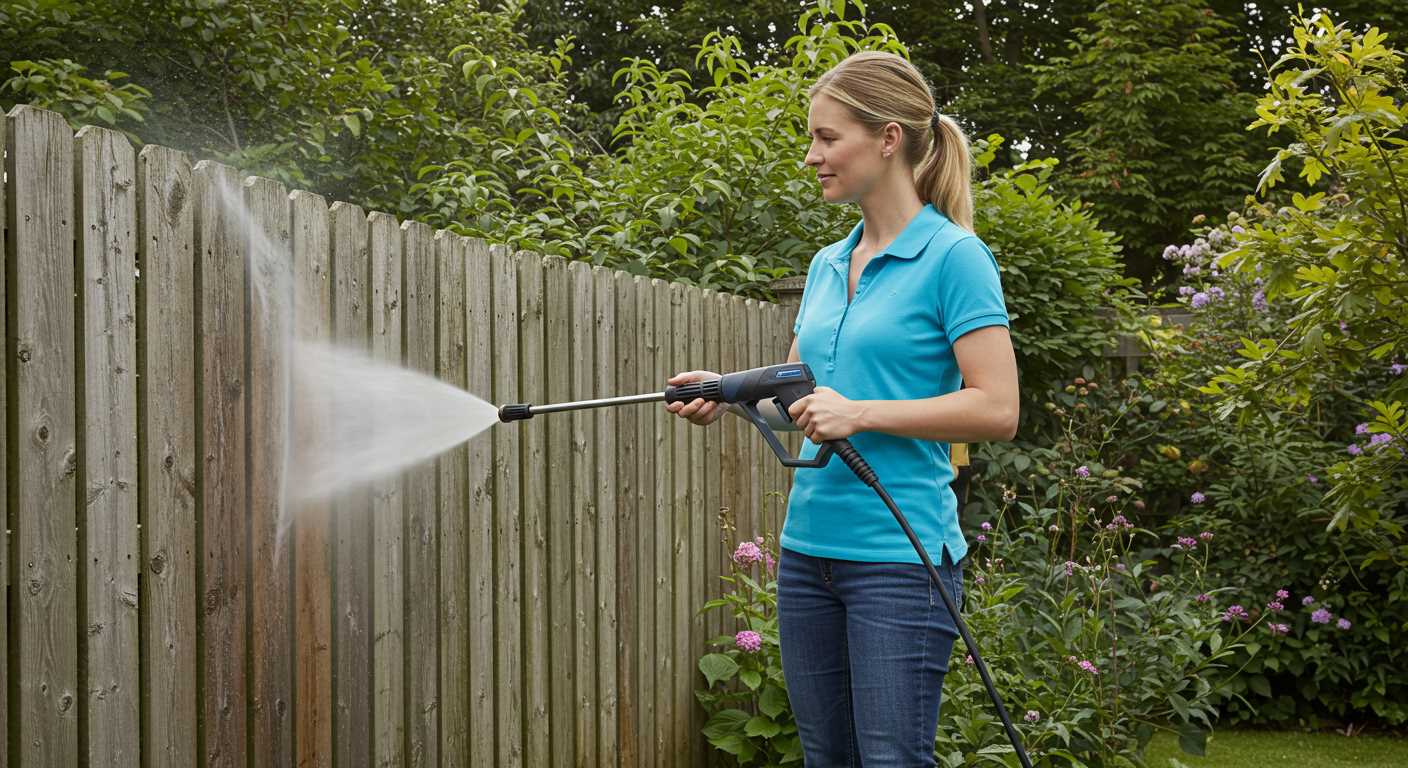

Adjusting the output strength can often be achieved through simple modifications. Start by inspecting the nozzle size; a smaller nozzle will generally result in a higher water velocity, increasing the force exerted on surfaces. Consider switching to a turbo nozzle, as its design enhances penetration and cleaning power by combining both high pressure and a rotating spray pattern.
Next, analysing the machine’s pump settings is crucial. Some models allow for pressure adjustments through a control knob or dial. Ensuring these settings are at their highest can maximise operational capacity. Regular maintenance, such as replacing worn seals or filters, also plays a significant role in maintaining optimal functionality.
Lastly, the choice of detergent can influence results. Using cleaners specifically formulated for the equipment type will assist in achieving better outcomes without compromising machinery health. Selecting the right cleaning agents can improve the effectiveness of the operation, resulting in superior cleaning performance every time.
Optimising Water Flow for Enhanced Performance

Adjusting the water flow rate can significantly enhance machine output. Begin by ensuring that the inlet is clear of any blockages. Using a larger diameter hose improves water delivery, ensuring consistent performance. Additionally, check for leaks that could reduce water pressure.
Changing Nozzles Effectively
Switching to a nozzle with a narrower spray pattern increases force. On the other hand, wider nozzles reduce pressure but cover a larger area. Experimenting with different nozzle types allows for specific cleaning tasks, optimising performance for varying surfaces.
Regular Maintenance Is Key
Keep the unit in peak condition through routine maintenance. Cleaning filters and inspecting seals prevents pressure losses. Ensuring that all connections are tight and functional maximises operational efficiency, contributing to higher output levels.
Understanding Pressure Washer Bar Ratings

The measure of cleaning power, often presented in bar ratings, plays a pivotal role in selecting machinery for various tasks. A bar rating typically indicates how much pressure the unit can exert, significantly impacting the performance and effectiveness of cleaning operations.
<p.Common ratings range from 100 to 300 bars, with higher numbers reflecting greater cleaning potential. For example, models designed for light residential use often operate between 100 to 150 bars, ideal for tasks like washing vehicles or outdoor furniture.
Mid-range capabilities, usually around 150 to 200 bars, are suitable for larger areas such as driveways or patios, addressing stubborn dirt and grime. Units exceeding 200 bars, particularly those reaching 300, are tailored for heavy-duty applications, including industrial settings and extensive outdoor cleaning.
Understanding the relationship between bar ratings and nozzle sizes is critical. A narrow nozzle increases pressure without altering the output of water, effectively enhancing cleaning capability. Conversely, broader nozzles reduce pressure while expanding the area covered during operation.
It’s advisable to assess the intended cleaning tasks when evaluating these ratings. For consistent high performance, units should match recommended bar ratings with proper nozzle choices and adequate flow rates. Additionally, seasonal maintenance can optimise performance, ensuring efficient operation over time.
Acquiring knowledge about bar ratings can significantly impact the outcome of cleaning efforts, allowing for effective cleaning tailored to specific requirements while avoiding any unnecessary wear on equipment. Selecting the right tools not only boosts efficiency but also extends the lifespan of the machinery.
Adjusting the Pressure Regulator Settings
Careful manipulation of the pressure regulator can significantly enhance performance. Follow these steps for optimal results:
- Locate the pressure regulator. This component is usually situated on the pump or near the control panel.
- Using a wrench, gently loosen the adjustment screw. Turning it clockwise will typically increase the flow force, while counterclockwise reduces it.
- Make small adjustments–about a quarter turn at a time. This allows for better control and avoids overwhelming the machine.
- Conduct a test run after each adjustment. Observe the spray pattern and intensity; this indicates the effectiveness of the modifications.
- Fine-tune as necessary based on observed results. It may take several iterations to achieve the desired output.
Regular inspection of the regulator is advised to prevent wear and preserve functionality. Always refer to the manufacturer’s manual for specific guidance related to your model.
In cases of persistent issues, consider checking for any blockages in hoses or nozzles. Clear pathways can enhance overall performance and maintain consistency in output pressure.
Replacing Nozzles for Higher Pressure Output
Opt for nozzles with a smaller diameter to elevate the force of the water stream from your cleaning unit. Swapping the existing nozzle for one with a narrower aperture will concentrate the water flow, resulting in a more intense cleansing action. Always check the compatibility of the nozzle with your equipment to ensure optimal performance.
Utilising a turbo nozzle can also significantly enhance cleaning capability. These nozzles rotate the water spray, combining the power of a narrow jet with a wider fan pattern, thereby tackling stubborn dirt and grime efficiently. This option is particularly effective for surfaces like driveways and patios that require rigorous scrubbing.
For various cleaning tasks, consider a quick-connect nozzle system. This allows for easy swapping between different types of nozzles, enabling swift adjustments based on the cleaning requirement. Making these changes on-the-fly can save time and ensure each task is handled effectively.
Regular maintenance of nozzles is vital. Clean any clogs that may hinder the flow; even a minor blockage can reduce the effectiveness of the water stream. Periodic inspections ensure that all attachments remain in peak condition, providing consistent results.
Always refer to the manufacturer’s specifications for nozzle recommendations to maintain the integrity of the device and prevent any damage. Proper selection and maintenance of nozzles will not only elevate cleaning performance but also extend the lifespan of the equipment.
Upgrading the Pressure Washer Pump

Investment in a high-performance pump is the most effective way to elevate water output. Selecting a pump with a higher PSI rating will significantly enhance cleaning power. Look for brands that are renowned for reliability and effectiveness to ensure a worthwhile upgrade.
Consider both electric and gas-powered options, as each offers distinct benefits. Gas units generally provide more power and are better suited for heavy-duty tasks, while electric pumps offer convenience and quiet operation for lighter jobs. Evaluate your cleaning requirements to choose appropriately.
When replacing the pump, ensure compatibility with existing components such as the motor and hose connections. A mismatched pump can lead to performance issues and potential damage. Review the specifications of your current setup before making a purchase.
Installation may require specific tools and mechanical knowledge. Follow manufacturer guidelines meticulously during installation to avoid complications. Use quality fittings and seals to ensure there are no leaks, which could impair efficiency.
Testing the new pump should be done cautiously. Begin with low settings and gradually adjust to higher levels, observing for any irregularities. If issues are present, consult the user manual or a professional technician for assistance.
Maintaining Hose and Connections for Optimal Performance

Regular inspection of the hose and fittings ensures maximum output from the cleaning unit. Look for signs of wear, cracks, or kinks in the hose. Any imperfection can reduce flow and hinder overall functionality.
Connections must be tight and free of leaks. A small leak in the fittings can significantly diminish the efficiency of the equipment. Check the couplings and o-rings periodically. If they seem worn out, replace them immediately to maintain seal integrity.
Cleansing the Hose Interior
Build-up inside the hose restricts flow and diminishes effectiveness. Flushing the hose with clean water after use removes debris. If stubborn residue persists, consider using a mild cleaning agent specifically designed for hoses.
Choosing Quality Hoses
Opt for reinforced or heavy-duty hoses. These resist kinks and withstand higher stress, contributing to the longevity of the system. Verify compatibility with the cleaning unit’s specifications before making a purchase.
| Maintenance Task | Frequency | Notes |
|---|---|---|
| Inspect hose for cracks | Before each use | Replace if damaged |
| Check connections for leaks | Weekly | Use tape or sealant if necessary |
| Flush hose interior | After each use | Use clear water, chemicals only if necessary |
| Replace deteriorating fittings | As needed | Consider upgrading to higher-grade materials |
| Store properly | After each use | Avoid tight coils; hang or lay flat |
Maintaining hoses and connections is pivotal for achieving high performance. Regular upkeep extends the lifespan of the equipment while ensuring it operates at optimal levels. Incorporating these practices into routine maintenance can make a notable difference in efficiency and cleanliness outcomes.
Using Chemical Additives to Boost Cleaning Power
Incorporating chemical additives can significantly enhance the effectiveness of any cleaning operation. Selecting the right solution for the task at hand is key. Alkaline or acidic cleaners work best on specific types of grime. Alkaline detergents excel in breaking down oil and grease, making them ideal for automotive cleaning and heavily soiled surfaces. Acid-based solutions are more suited for mineral deposits and rust removal.
Mix the chosen chemical with water according to the manufacturer’s instructions to ensure optimal results. Some formulas require specific dilution ratios for effectiveness. Use a downstream injector to safely apply the mixture, allowing for thorough distribution over the surface. This method prevents damage to sensitive materials while maintaining the intensity of the cleaning solution.
Always check compatibility with your equipment. Some additives may cause wear and tear on seals and O-rings, leading to potential leaks or malfunctions. Regularly inspect hoses and parts after using chemicals to assess any impact and ensure longevity.
For tough stains, combining additives can be advantageous. However, avoid mixing different brands without verifying compatibility to prevent adverse reactions. Conduct spot tests on inconspicuous areas to gauge the additive’s efficacy and safety on surfaces.
Storing chemicals properly is vital. Keep them in a cool, dry place away from direct sunlight and freezing temperatures. Label containers clearly to avoid confusion, ensuring safe handling and access.
Lastly, always prioritise safety. Use appropriate personal protective equipment, such as gloves and goggles, when handling chemicals. Following these guidelines will lead to a noticeable improvement in cleaning performance, thereby achieving desired outcomes efficiently.
Testing and Monitoring Pressure Levels
To ensure optimal performance from your cleaning unit, regular testing and monitoring of water force are pivotal. Use a pressure gauge, which can be attached to the outlet of the machine, for accurate readings.
- Choose a compatible gauge model, ideally rated for the specific range your equipment operates within.
- Start the appliance and allow it to reach operational temperature before logging readings.
- Observe readings at various nozzle settings to identify changes in performance across different attachments.
- Record results periodically to establish a baseline, which aids in tracking any performance decline over time.
Pay attention to fluctuations. Consistently low readings may indicate wear in components, while excessive force could point to possible blockages or malfunctioning parts.
- Check hoses and connections meticulously for leaks, as even small gaps can impact output readings.
- Inspect the pump for signs of wear; a failing pump can adversely affect the effectiveness of the entire system.
- Ensure the filtration components are clean, allowing for unobstructed flow through the unit.
Establish a regular maintenance schedule. Frequent testing coupled with diligent upkeep will extend the lifespan of your machine and enhance its operational efficacy.








